In this article, you’ll discover 10 brand strategy examples from some of the best brands in the world.
We’ll then uncover how to develop a brand strategy for your brand or your client’s.
First, we’ll break down the brand strategy elements these successful brands leverage, how they use them and why they work.
Then you’ll see examples of brand strategies for each of these important strategic elements.
By the end of this article you’ll understand the most important aspects of brand strategy and how the top brands in the world use them.
What Is Brand Strategy?

There are plenty of definitions of brand strategy out there.
I recently spoke with well-renowned branding author and strategist Marty Neumeier on The Brand Master Podcast.
I asked him what his definition of brand strategy is was and here’s what he had to say.
Brand Strategy is a long-term plan to out-manoeuvre competitors through radical differentiation.
To get into the weeds of brand strategy a little more, here’s my brand strategy definition:
Brand Strategy is the definition of a brand’s approach to who they target, how they differentiate and how they influence perceptions and decisions
When all is said and done, branding is about shaping the perception of a given business in the market as a more appealing option than its competitors.
Brand Strategy vs Marketing Tactics

Brand strategy is often confused with individual marketing tactics of a brand such as social media marketing, advertising or content marketing.
For these tactics to be effective, they must be executed as part of a larger strategy.
Mark Ritson, one of the world’s most renowned marketing professors wrote:
Tactics without strategy is dumbing down our discipline. If marketers want to be taken seriously, they must end their preoccupation with tactics and tools and focus on their strategy, devised by thoroughly researching, segmenting and targeting their audience.
PRO Brand Strategy BluePrint
Build Brands Like A Pro Brand Strategist

10 Key Elements Of Brand Strategy

Although no two brands are the same, there are a series of key brand strategy elements that are most commonly used.
Across the most successful brands and brand strategists in the world these key components are used consistently as the critical aspects of the overall brand strategies.
Purpose
Vision
Mission
Values
Positioning
Personality
Voice And Tone
Brand Story
Heritage
Tagline
Each of these key brand strategy elements can spearhead a brand’s overall strategy or work as part of a team of strategic components.
I’m about to break down each one of these essential strategy elements and provide you with the best examples for each.
The following sections will provide you with an understanding of how these elements work and inspiration to create a strategy for your own brand or your client’s.
Let’s start at the top with brand purpose.
Explore Brand Strategy
Programs & Tools
#1. TOMS Shoes – Brand Purpose
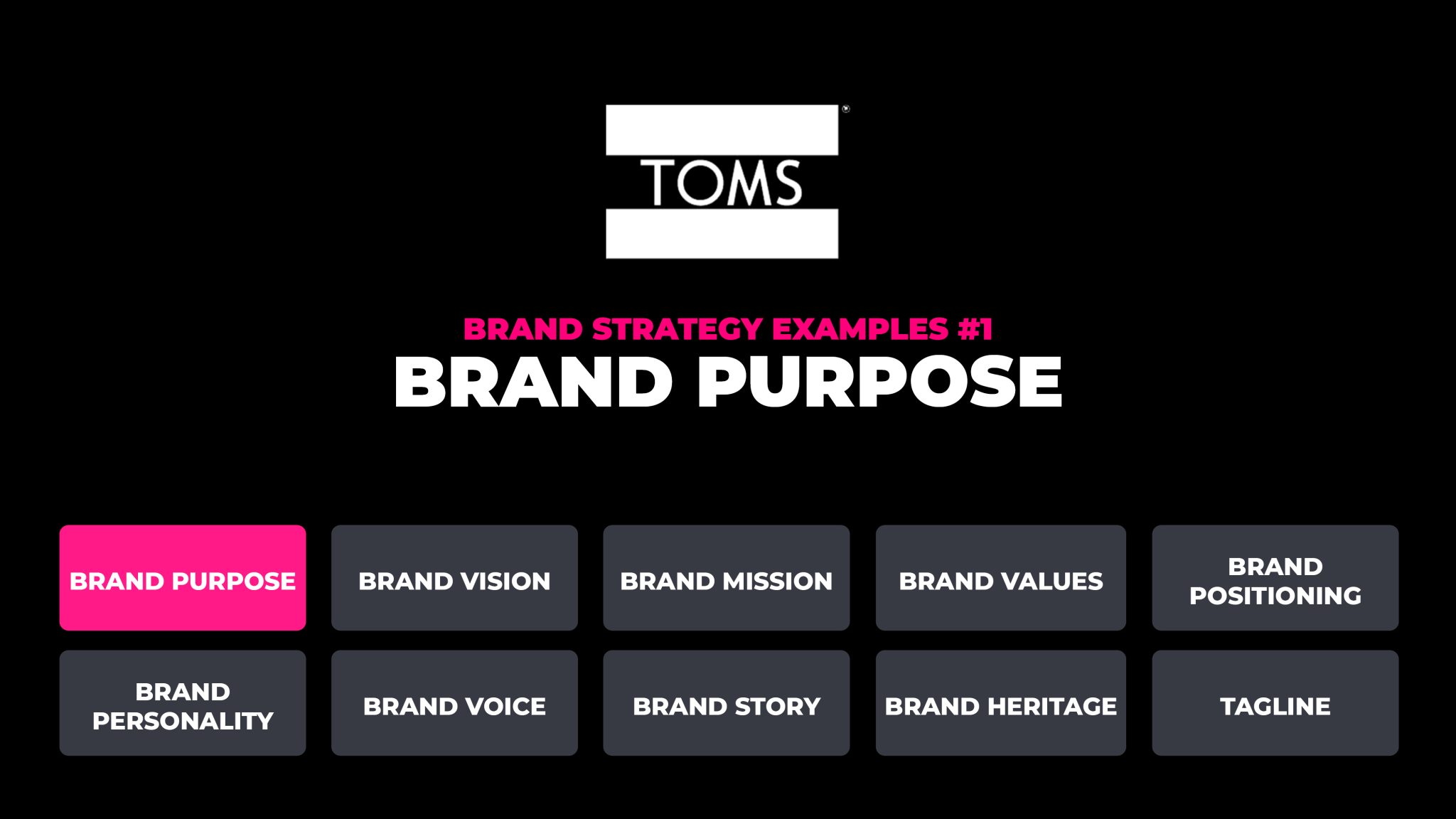
The purpose of the brand or the brand’s purpose defines why the brand exists.
Brand Purpose Definition
Why Brand Exists Beyond Money
Of course, every business exists to make money, though most brands serve a purpose beyond money whether they define that purpose or not.
Brand’s that take the time to define their reason for being (or their “Raison d’être) tend to be more dialed into the audience they serve.
Though many dismiss brand purpose as a legitimate strategy, the figures don’t lie.
In a “Strength of Purpose Study” of 8,000 global consumers by New York-based Zeno Group, the results were clear.
Consumers are four to six times more likely to buy from, trust, champion, and defend companies with a strong Purpose.

TOMS shoes is an excellent example of a purpose-driven brand that has used their purpose as their driving strategy using the following brand purpose statement.
We believe in a future where all people have the chance to thrive.
The TOMS brand was created when founder Blake Mycoskie traveled through Argentina in 2006 and experienced the hardships faced by children without shoes.
His experience inspired him to create a brand with giving at its core. For every pair of shoes the company sold, a new pair would be given to a child in need.
This was the purpose the TOMS brand was born from which still drives the business today, with the brand investing 1/3 of all profits into grassroots efforts.
The 2021 Purpose Power Index ranks TOMS as #2 of the 20 most purposeful brands in the world.
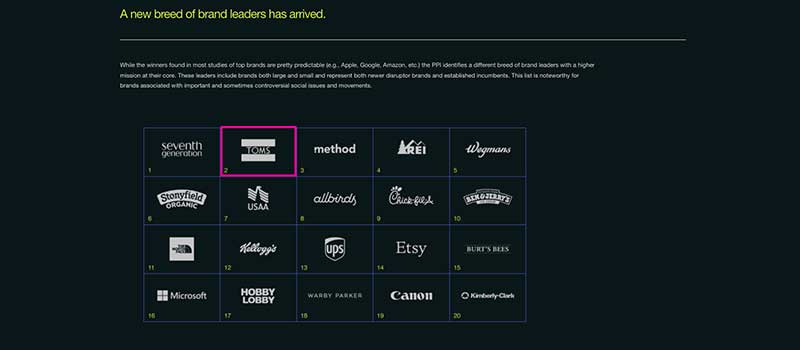
Brand purpose is a legitimate brand strategy example.
Just like it has at TOMS, it can drive decisions, inspire employees and attract dedicated loyal customers who believe what the brand believes.
Brands that want to make emotional connections need look no
How To Create Your Brand Purpose
When creating your brand purpose, define the reason you would exists if not for money.
#2. Tesla – Brand Vision

The brand vision sets in place the navigational direction for the brand.
It plants a flag in the ground as to where the brand wants to go which ultimately influences decisions and actions to guide the brand to its intended destination.
Brand Vision Definition
Where the brand wants to go and what it aspires to be
A brand vision is not a piece of marketing designed to attract customers, but an internal guidepost expressed in the brand vision statement.
Brands that are acutely in tune with the vision of their future brand can breathe a sense of believability throughout the brand’s personnel that they are part of something bigger than themselves.

Tesla is a brand with a big vision inspired by 2021 person of the year Elon Musk.
Tesla had become a world-leading brand and the benchmark in the electric car market.
But Tesla’s ambitions go way beyond the automobile industry and into the realm of sustainability.
The revamp of their Tesla’s brand vision statement, which is also used as their mission statement is:
Tesla doesn’t use their vision statement as a “nice to have” or a piece of marketing.
They use it to drive decisions and actions as the brand expands into the solar energy category.
How To Create Your Brand Vision
When creating your vision statement, define what you want your future brand to look like, and use that vision as a guiding compass to get there.
#3. Patagonia – Brand Mission
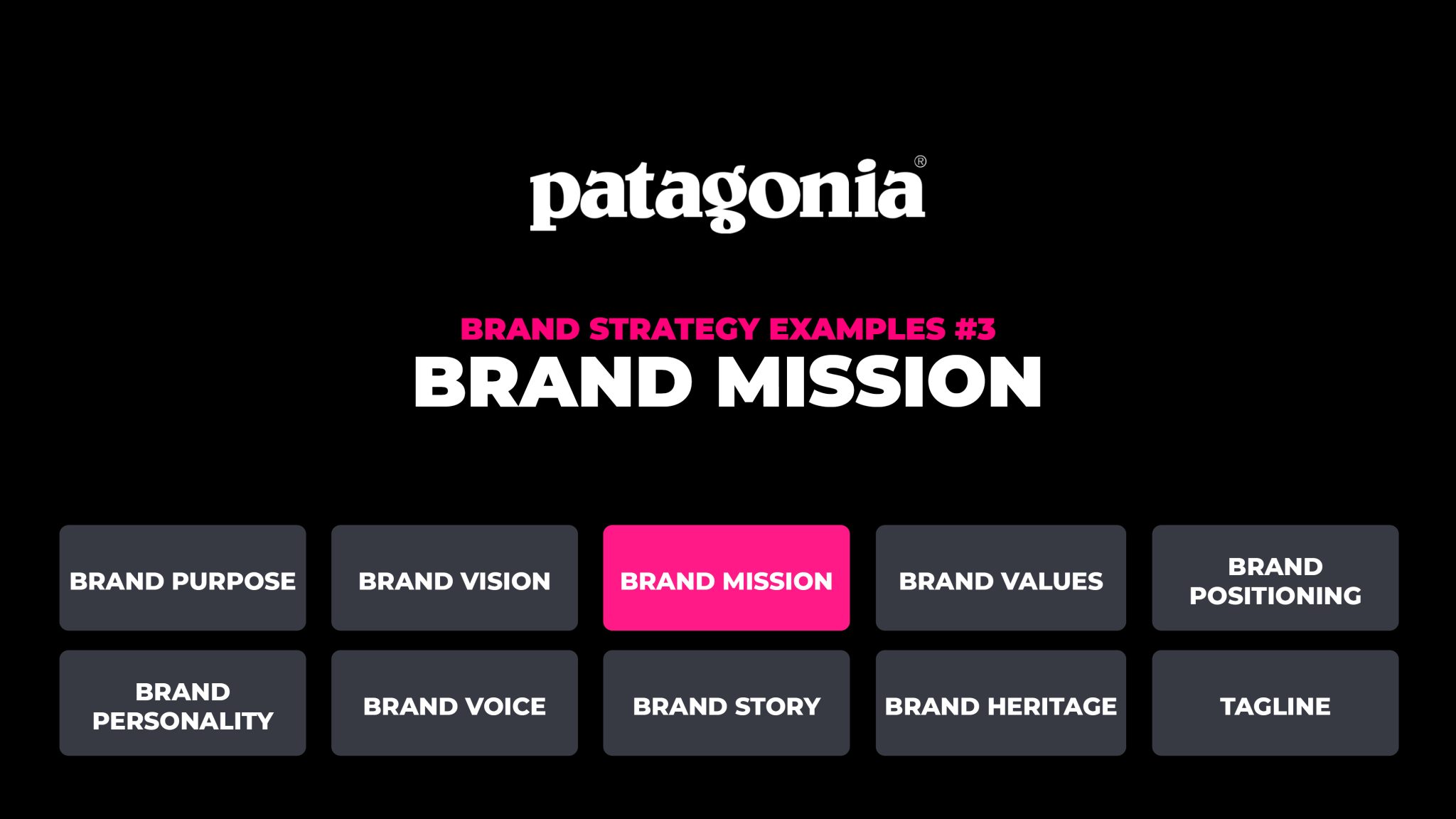
While the brand vision outlines the aspirations of the brand for the future, the brand mission defines the brand’s commitments for today.
The goal of the brand mission is to define that commitment.
The brand mission is documented in the brand mission statement, which, like the vision statement is an internal document.
The mission provides clarity for the brand leaders and personnel about the consistent commitments it must deliver on to achieve the future vision.
When a brand is clear on its commitments, it shows up in its actions and forms part of the brand’s reputation.

For example, Patagonia is a well-established lifestyle brand that produces outdoor, camping and climbing apparel brand.
Founded by climber and brand leader Yvon Chouinard in 1973, the brand has very strong roots in protecting the environment.
The Patagonia brand mission, as outlined in their brand mission statement is to:
Build the best product, cause no unnecessary harm, use business to inspire and implement solutions to the environmental crisis.
This mission has been the driver behind shaping Patagonia’s business processes and marketing to align with their commitment.
Today, many brands have jumped on the “Sustainability” bandwagon without much to show for it.
Patagonia however, is an example of how the brand mission can not only form an important part of the brand strategy but can be the driver behind that strategy’s success.
How To Create Your Brand Mission
When defining your brand mission for yours or you client’s brand strategy, make sure you dig deep to find a commitment that will drive decisions.
#4. IKEA – Brand Values

Brand values outline what’s important to the brand in the way they do business.
The goal of brand values are to provide a boundary of behaviour for the brand so it operates according to a certain philosophy of conduct.
Brand values form an integral part of the brand culture which is the manner of how the brand functions internally.
Brands that are happy on the inside, tend to be happy on the outside.
This isn’t just an assumption. Both on revenue, and stock-price performance, brands that consistently show up in the 100 Best Companies To Work For List, see higher than average returns.
Brand values play a critical role in aligning the brand internally so everyone is pushing in the same direction.
There’s a caveat here though.
Values for the sake of values are useless.
Brand Values must be actionable and they must shape how the brand engages both internally and externally.

IKEA is an example of a brand that is clear on their values and how to use those values as part of their broader brand strategy.
Here’s how they see it:
We have a strong set of values. They are the compass that guides us in everything we do. Our culture is formed when we put these values into action.
They go on to say
We’re constantly trying to find better ways to get things done and to bring out the best in ourselves and others.
Here are the core brand values that drive the IKEA brand.
Togetherness
Caring for people and planet
Cost-consciousness
Simplicity
Renew and improve
Different with a meaning
Give and take responsibility
Lead by example
As you can see, IKEA’s values are unique to them. They’re clear and actionable and can be used at to guide decisions, actions, communication and engagements.
How To Develop Your Brand Values
When defining core values for your own brand, start with single words that are important to you in how you do business, then make them unique and actionable.
#5. Apple – Brand Positioning
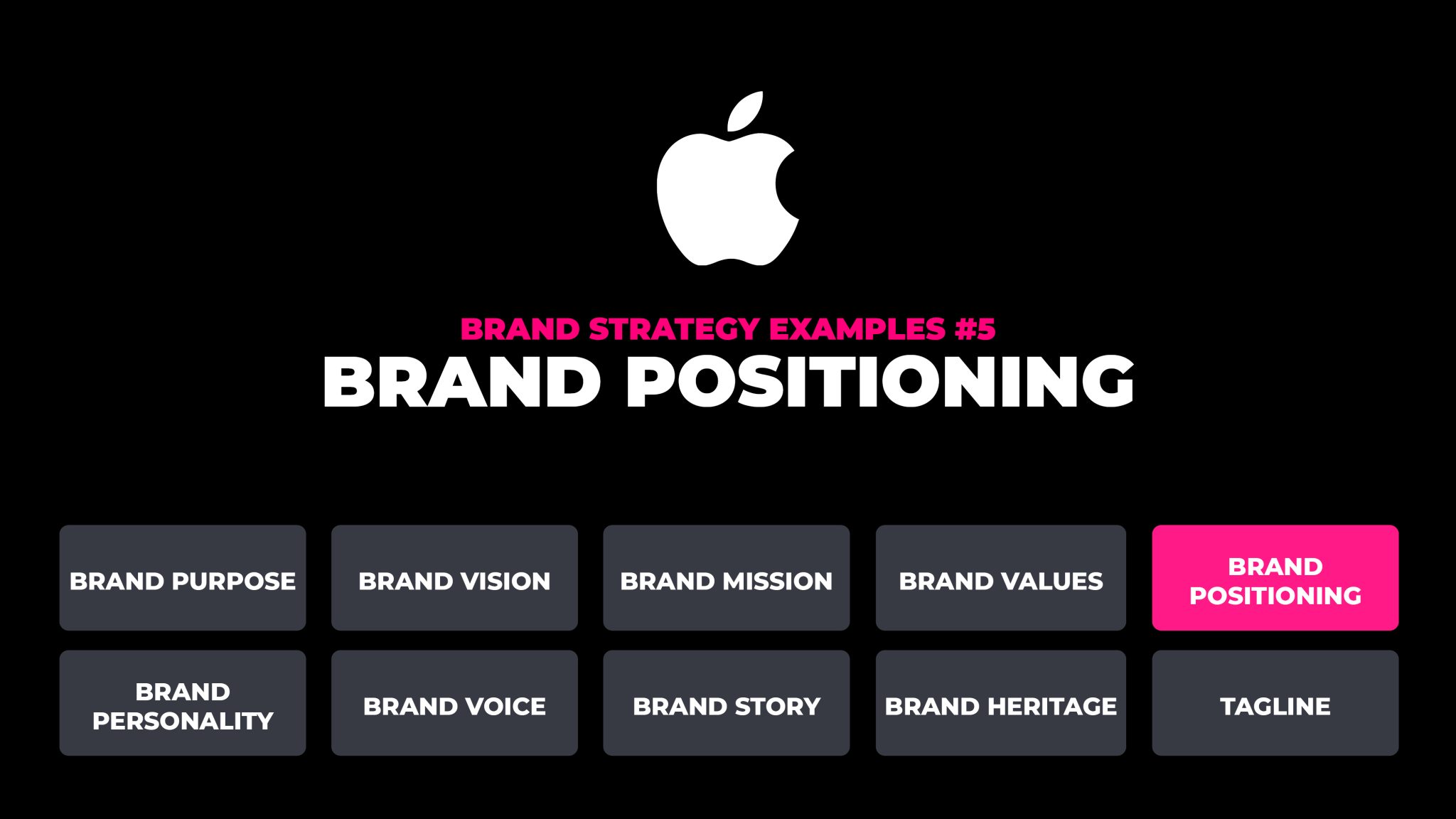
Brand positioning is arguably the most important and most difficult brand strategy element to define and develop.
The goal of brand positioning is to specify a unique point-of-difference (or differentiator), that sets the brand apart from its competitors.
An effective brand position will earn the brand a distinctive place in the mind of the audience as to why they are a more relevant choice for them.
Consumers are bombarded with choices in every category and brands must fight for awareness, attention, and salience.
The winners are remembered and chosen in the buying decisions and the positioning strategy plays a big role in influencing that decision.
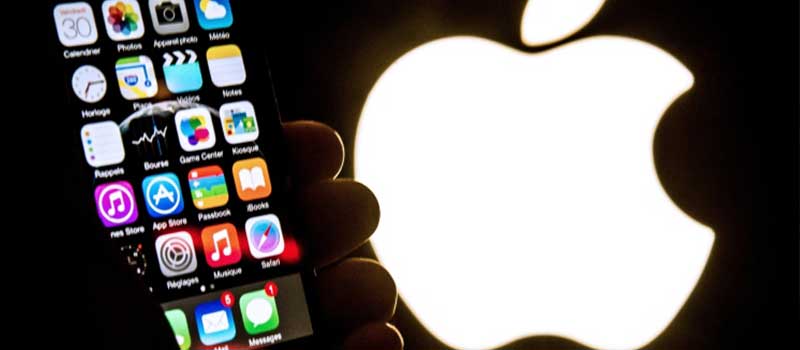
Apple is one of the best examples in the worlds of a strong positioning strategy.
When you think of Apple, you think of Simplicity and Innovation.
There are hundreds of technology brands in the world through none deliver the innovation and the simplistic brand experience quite like Apple.
This focus on advancement and an exemplary brand experience has allowed Apple to establish the leading position with premium pricing competitors can’t compete with.
Here is the Apple brand positioning statement.
For individuals who want the best personal device, Apple is the technology leader that emphasises research, advancement and innovation to give our customers an innovative and seamless experience. We consider the impact our products and processes have on our customers and the planet.
The brand positioning statement is not designed as a piece of marketing, but an internal document to shape everything about the brand from experience to marketing and everywhere in between.
How To Develop A Brand Position
When defining your brand position, uncover what’s important to your audience and how you’ll give them what they want with an experience unique to your brand.
#6. Harley Davidson – Brand Personality
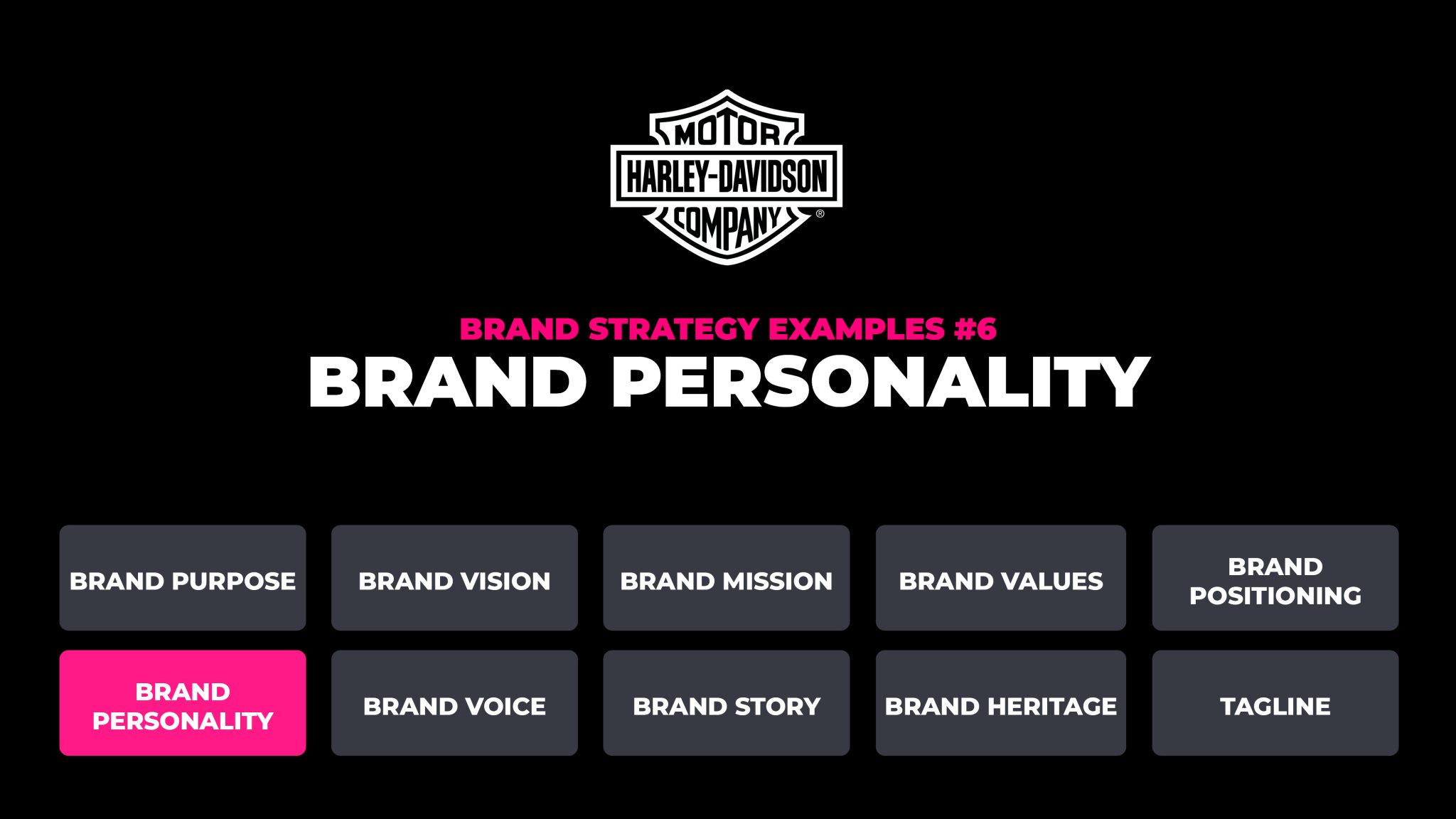
Brand personality is one of the most potent but underutilised elements of brand strategy.
The goal of brand personality is to make your brand sound and feel human rather than feeling like a corporate entity.
What a brand says is critical, but the way it says it is becoming an increasingly important aspect of brand communication.
As people, whether or not we connect with others is largely due to whether or not our personalities align.
We feel more connected to those who display the same characteristics and traits as we do because our reptilian brain signals the familiarity as safety.
Brands therefore need to show up with relevant human traits to get approval from that reptilian brain.

Harley Davison is a perfect example of a brand with personality.
Throughout the brand experience from the copy on their website to their image style to their marketing and advertisements, Harley’s communication is laced with personality.
Harley’s target audience are rebels at heart and they use that rebellious spirit throughout the experience which includes
Rugged Brand Identity
Gritty language
Rough Tone Of Voice
Non-conformist attitude
Disruptive behaviour
Harley loves to go against the grain of everyday society and in doing so, they endear themselves to the inner rebel of their audience.
How To Develop A Brand Personality
When defining a personality for your brand, take the time to first understand your audience and the traits they’re attracted to. Use those traits to connect and resonate and embed them into your communication strategy.
#7. Old Spice – Brand Voice & Tone
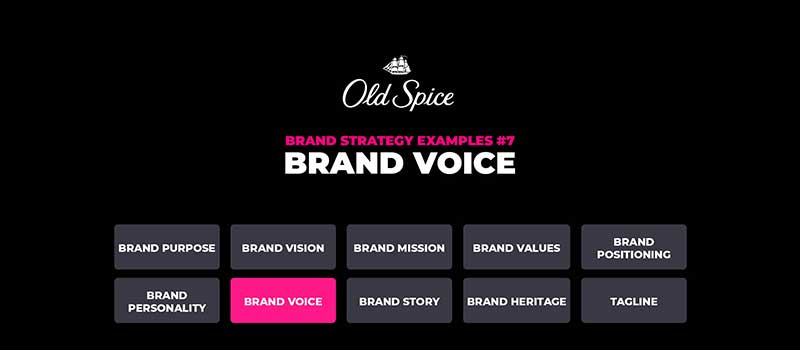
Brand voice and tone is and extension of the brand personality.
The goal of the brand voice and tone is to set the mood and provide a guide for how the brand will sound.
While your brand personality are the broader strokes of how your brand will show up, your brand voice provides the subtle detail of your brands tonality.
Your personality and tone work hand-in-hand to deliver your message in a specific manner to attract your audience.

Old Spice is an excellent example of how a brand can use a fresh tone and style of communication to connect with new markets.
Before their repositioning at the turn of the century, Old Spice was seen as a boring old man’s brand.
But with a refreshed personality and tone of voice laced with tongue-in-cheek humour, satire and swagger, Old Spice became a household favourite among younger demographics.
Old Spice became the #1 brand in the Men’s Body Wash category within 18 months of adjusting their brand strategy and tone of voice.
How To Develop Your Tone Of Voice
When developing your brands tone of voice, start first with a well-defined personality. Use your personality traits to shape the way you want your brand to sound and the characteristics in the tone.
#8. Brand Story – Airbnb
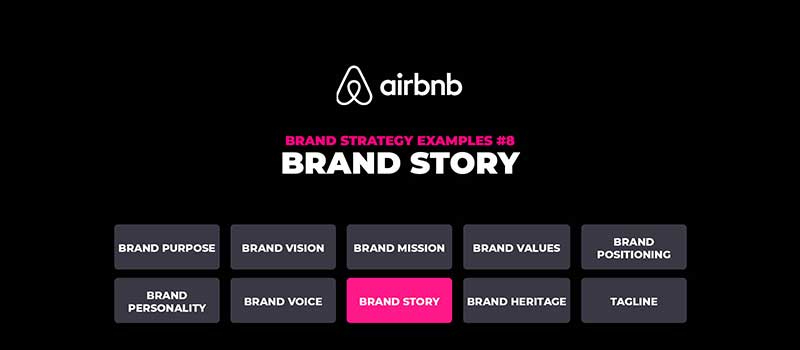
Brand story or brand storytelling strategy is the framework of narrative techniques used to engage with the audience in a highly engaging way.
The goal of brand storytelling is to create associations and deliver messages to the audience in a way that feel relevant and engaging.
Traditional marketing techniques that push products and services have an extremely high dismissal rate because consumers are simply bombarded.
Stories on the other hand engage a primitive part of the brain that cut’s through the barrier of analytical thinking.
When we hear a story it draws our attention and opens a story loop that needs to be closed.
In other words, when we hear a story, we instinctively need to know what happens next.
The more relevant the story is to the journey your audience is on, the more clearly they see themselves in the story.
Brands that weave their message into a story about their audience plants a seed in their mind that’s received fondly and remembered easily.
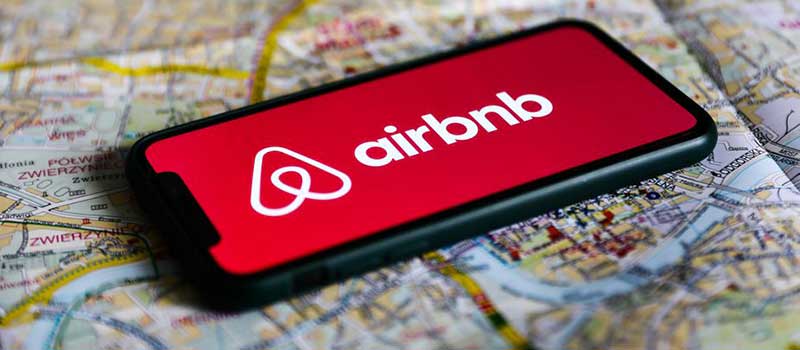
Airbnb is an example of a brand that has brand storytelling down to an art.
Airbnb’s mission is to help us imagine a world where we can
Belong Anywhere.
To forge this mission into a reality, they focused their efforts on building a community and have created a platform for that community to share their stories.
From hosts to guests, AirBnB have fostered a community of storytellers and loyalists marketing the brand through their own positive experiences.
How To Create Your Brand Story
When defining a brand storytelling framework for your brand, step into the shoes of your audience and immerse yourself in their journey. Tell the story of the journey your audience is on and weave your brand in as the support to help them get to their destination.
#9. Hermes – Brand Heritage
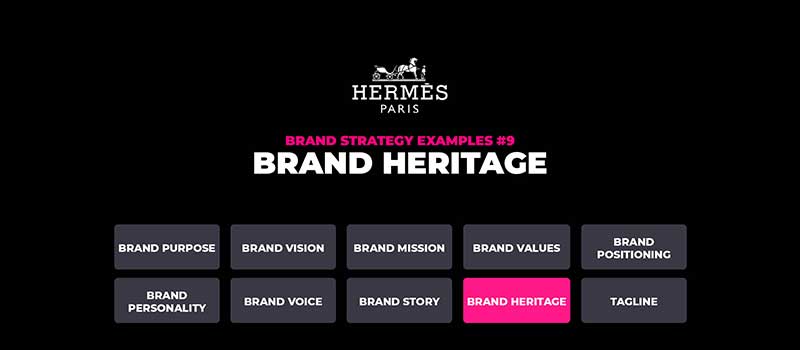
Brand heritage is a brand strategy that tends to be reserved for brands with history.
The goal of brand heritage as a strategy is to create associations of tradition and longevity.
This inherently suggests they are a brand that has stood the test of time for a reason.
Whether the brand is 30 years old or 130 years old, associations to times past can evoke a sense of nostalgia an place the brand in a unique place in the audiences mind.

One of the best examples of brand heritage is from Hermes, the French fashion brand.
Hermes, founded in 1837 by Theirry Hermes is the oldest fashion brand in the world.
The brand has a deep sense of history and tradition, partly because the brand still remains in the Hermes family which has now spanned five generations.
Hermes was trading long before “branding” became an important aspect of business and they’ve stayed true to their roots.
The Hermès’ brand philosophy was well summarised by former CEO Jean-Louis Dumas when he said
We don’t have a policy of image, we have a policy of product.
Though very few brands enjoy the competitive advantage of heritage, it’s a potent strategy if available.
#10. Nike – Tagline / Slogan
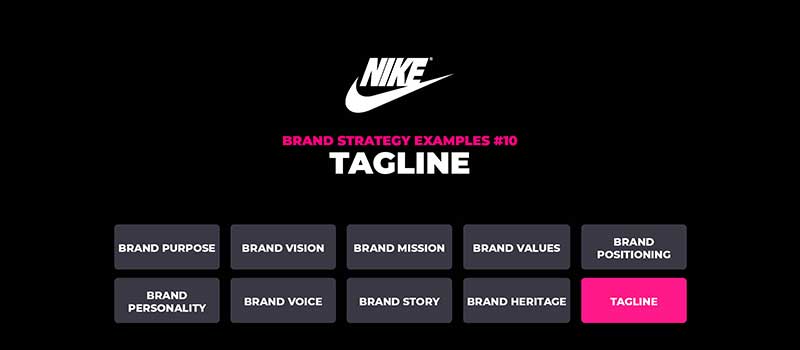
The brand tagline or slogan is the brands message distilled in its purest, most concise form.
The goal of the tagline or slogan is to plant a memorable meaning in the mind of the audience that can grow into the position it wants to own.
Though the words “tagline” and “slogan” and used interchangeably, there is a difference. A slogan spearheads a marketing campaign while a tagline spearheads the brand.
Slogans however can be promoted to a tagline on the back of a highly successful campaign which often happens.
The tagline should help to solidify the position by making the idea simple and easy to remember.
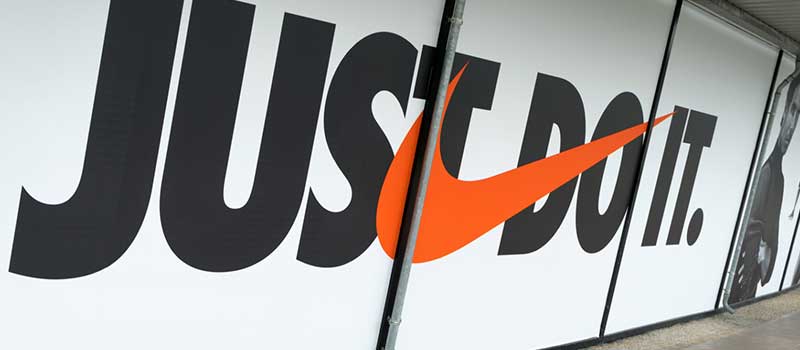
Nike’s tagline “Just Do It” is probably the most successful and memorable tagline of all time.
The Nike tagline was born as a slogan for a campaign by Wieden + Kennedy in 1987.
The slogan resonated deeply with the athletic community who was Nike’s core audience and it quickly became the adopted tagline.
The tagline has become the spearhead of the brand alongside its iconic swoosh and acts as way of life for the brand and its customers.
How To Create a Tagline
Start first with your brand position and distil that position into a handful of words. An effective tagline has four key characteristics. It should be concise, meaningful. Memorable and catchy.
How To Create A Tagline
Start first with your brand position and distil that position into a handful of words. An effective tagline has four key characteristics. It should be concise, meaningful. Memorable and catchy.
Over To You
An effective brand strategy is made up of a collection of elements all working together as a cohesive system.
All successful brands have a clearly defined position which is a non-negotiable when it comes to building a brand.
Once that position is defined, you can use and or all of the elements listed above to focus your strategy.
Remember…Brand Strategy is the definition of a brand’s approach to who they target, how they differentiate and how they influence perceptions and decisions
Get crystal clear on who your audience is and what they want, and you significantly increase your ability to influence.
On-Demand Digital Program
Brand Master Secrets
Make the transition from hired-gun to highly valued brand strategist in less than 30 days. The systems, frameworks and tools inside this comprehensive program are all you need to level up.








